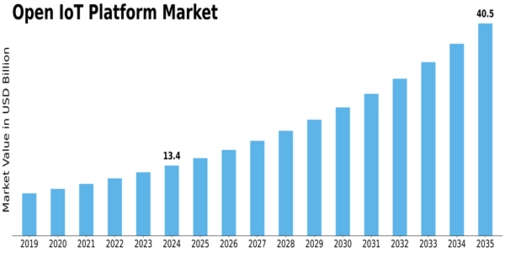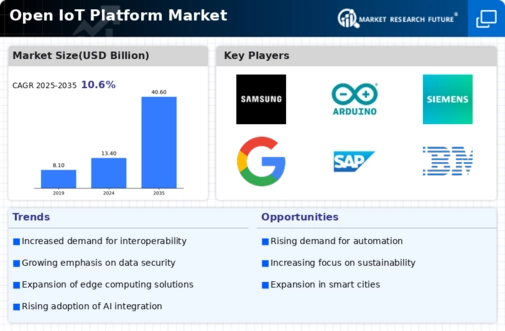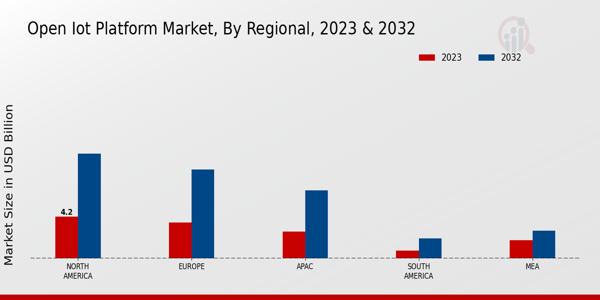Open Iot Platform Size
Open IoT Platform Market Growth Projections and Opportunities
The Open IoT Platform market is influenced by a multitude of factors, both internal and external, which shape its dynamics and growth trajectory. One significant market factor is technological innovation. As advancements continue to revolutionize the IoT landscape, platforms must adapt to incorporate cutting-edge technologies such as artificial intelligence, machine learning, and edge computing to stay competitive. Moreover, the increasing demand for interoperability drives the development of open-source platforms that facilitate seamless integration of diverse devices and systems, fostering collaboration and compatibility across various industries.
Another key market factor is the proliferation of connected devices. With the exponential growth of IoT devices across consumer, industrial, and enterprise sectors, the need for scalable and flexible platforms becomes paramount. Open IoT platforms offer the versatility to support a diverse array of devices, sensors, and protocols, enabling organizations to harness the full potential of their interconnected ecosystems. Additionally, the rise of smart cities and connected infrastructure projects further fuels the demand for comprehensive IoT solutions, driving the expansion of the open IoT platform market.
Market dynamics are also shaped by regulatory policies and standards. As governments worldwide enact regulations to govern data privacy, security, and interoperability in IoT deployments, platform providers must ensure compliance with these standards to build trust and credibility among customers. Moreover, initiatives promoting open standards and frameworks drive the adoption of open IoT platforms, fostering innovation and collaboration within the industry while reducing vendor lock-in and promoting vendor-neutral solutions.
Furthermore, market factors such as competitive landscape and industry partnerships play a crucial role in shaping the trajectory of the open IoT platform market. With a growing number of players entering the market, competition intensifies, driving providers to differentiate themselves through features, pricing, and service offerings. Strategic partnerships and collaborations with technology providers, system integrators, and industry consortia enable platform vendors to expand their market reach, enhance product capabilities, and address evolving customer needs more effectively.
Moreover, economic factors such as cost-effectiveness and return on investment (ROI) significantly influence purchasing decisions in the open IoT platform market. Organizations seek platforms that offer a balance between affordability and performance, providing robust features and scalability while minimizing upfront costs and total cost of ownership. Cloud-based deployment models and subscription-based pricing structures appeal to businesses looking to streamline operations and optimize resource allocation in an increasingly competitive market landscape.
Consumer behavior and industry trends also contribute to market dynamics, driving demand for specific features and functionalities in open IoT platforms. As end-users become more discerning and tech-savvy, they expect platforms to deliver personalized experiences, real-time insights, and seamless integration with existing systems and applications. Platforms that offer comprehensive developer tools, APIs, and ecosystem support gain a competitive edge by empowering customers to innovate and customize their IoT solutions according to their unique requirements.

















Leave a Comment